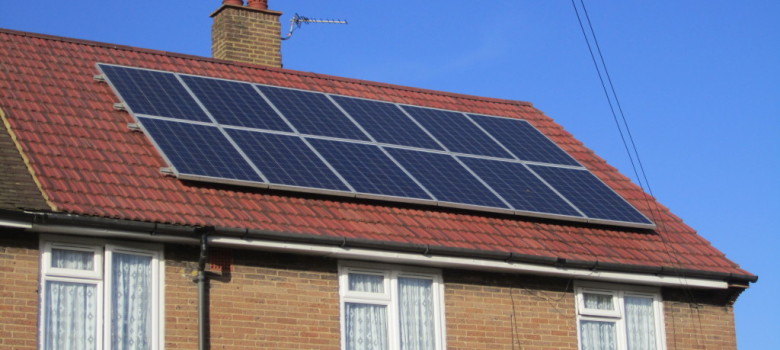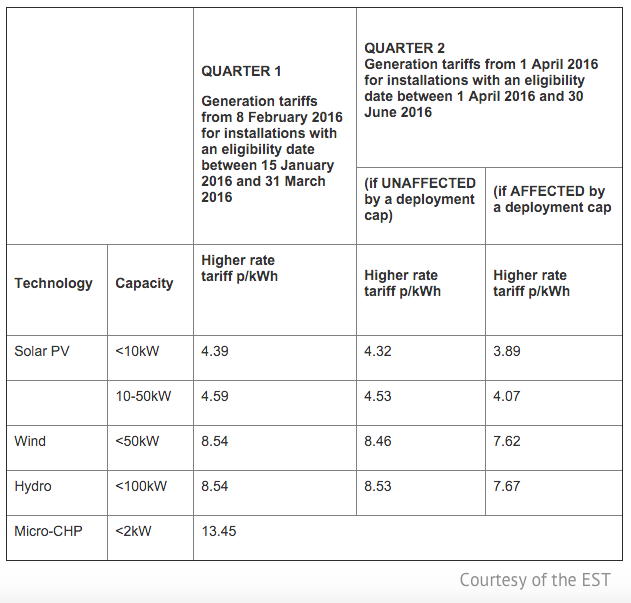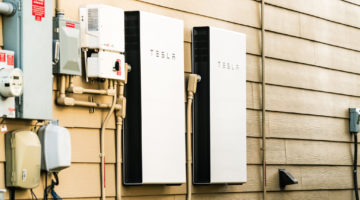
UPDATE: The Feed-In Tariff is now closed for new applications. To find out about the new scheme designed to replace it, click here.
For many years the government has incentivised households and business to adopt renewable energy technologies via the Feed-in Tariff. The FIT is basically a payment made to the owner of solar PV systems (and other electricity producing renewable technologies) for producing electricity. This payment is made regardless of what is done with the electricity, which can either be used in the building where it is produced or sold back to the grid.
The feed-in tariff has helped to install over 600,000 solar systems on roofs across the UK, but as time has gone on the feed-in tariff payments have reduced to reflect the falling costs of the measures being installed. Last Autumn however, the government announced a review of the FIT system and the mechanism by which it worked.
In January 2015 DECC (the Government body that oversees the scheme) introduced changes – which we explain below.
A cap on the number of FIT claimants per quarter
The major change is that there is a limit to the number of people that can claim the Feed-in tariff each quarter. When this limit is met, then claimants have to wait until the next quarter – which could mean a lower feed-in tariff payment (if it is downgraded in the following month).
Once your renewable electricity system is commissioned, and all your documentation has been sent through to the FIT licensee (e.g. MCS certificate, completed application form and EPC for solar PV), the licensee (which is normally the energy company paying out the FIT) will then add you to the OFGEM Central FIT Register.
Each and every application is added to this register and it is ordered based on the time and date of the MCS certificate. As soon as the allotted volume is met in a particular quarter, the claimant will have to wait until the following quarter (unless that is obviously full too – in which case they will have to continue waiting until there is space with a quarter’s cap (i.e. the number of people allowed to get the FIT each quarter).
A drop in the Feed-in tariff rates
Another significant, but perhaps expected, change was the drop in the feed-in tariff rates – which despite not being quite as dramatic as the review suggested, have still seen rocked the entire industry. Below you can see a table, which looks at the different rates.
Remember prior to this drop the feed-in tariff was 12.47p/kWh – so that is quite some drop and will definitely impact the financial payback if you do decide to get a solar system installed. We have discussed previously our opinions on the future of solar and how we feel there will be a move to energy storage – if you would like to have a read please click on the link below.
>>> Energy Storage – the future of solar panels <<<
The final change of this review was with regards to solar PV systems – and the fact that extensions to existing solar systems are no longer eligible. It used to be that the new solar panels would be treated as a single new installation with the FIT rate applied based on the time of commissioning. Unfortunately this is no longer the case – there are no FIT payments for additional solar panels added to existing systems.
UPDATE: The Feed-In Tariff is now closed for new applications. To find out about the new scheme designed to replace it, click here.













No Comments yet! Be the first one.